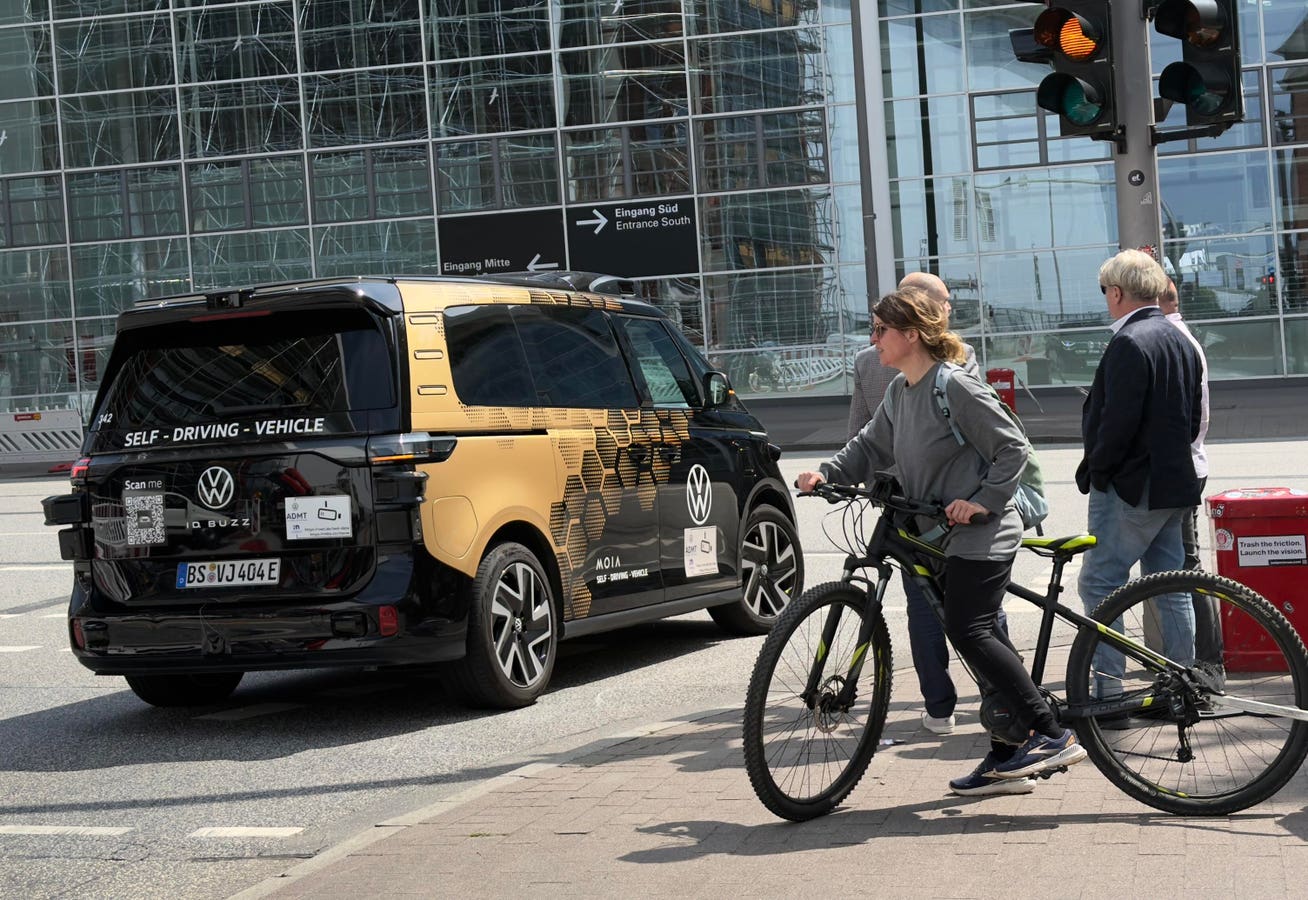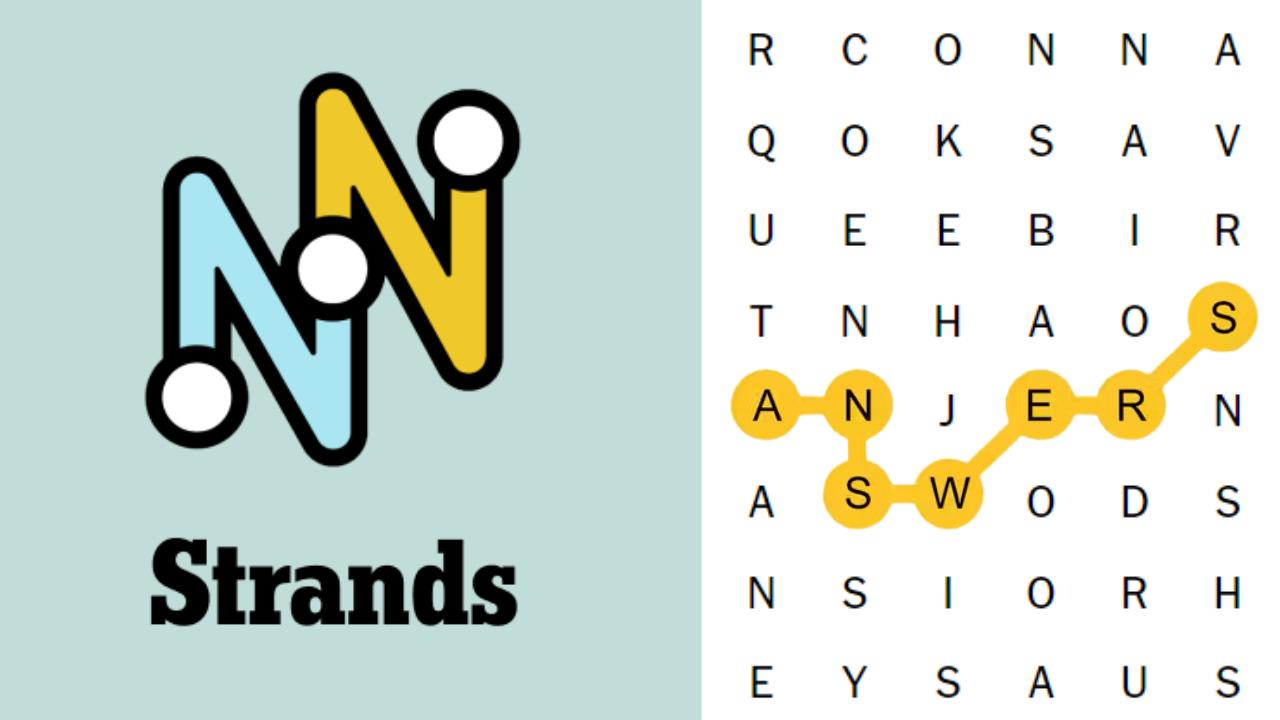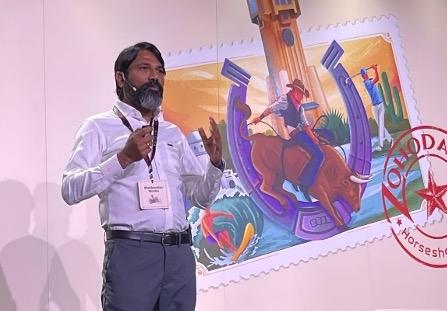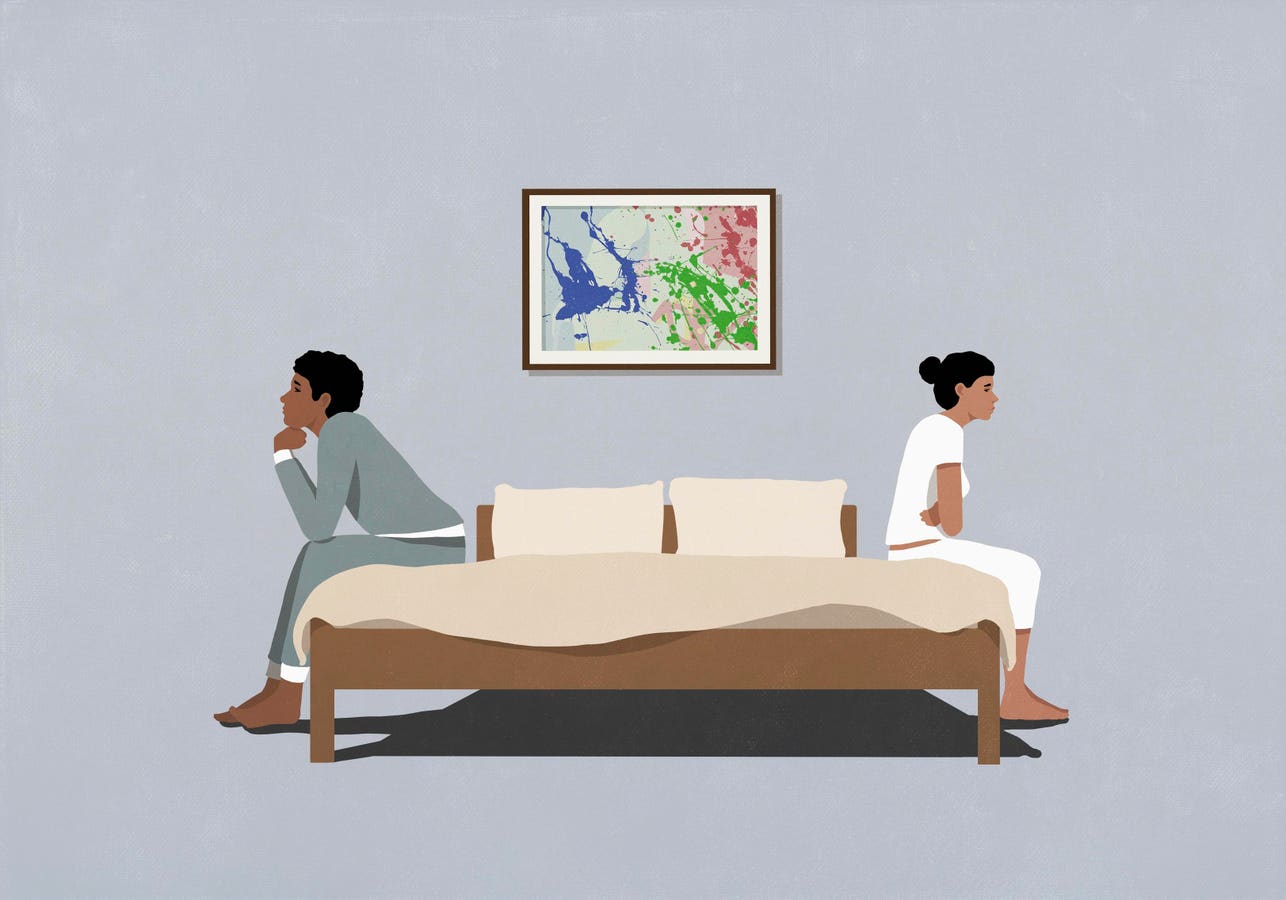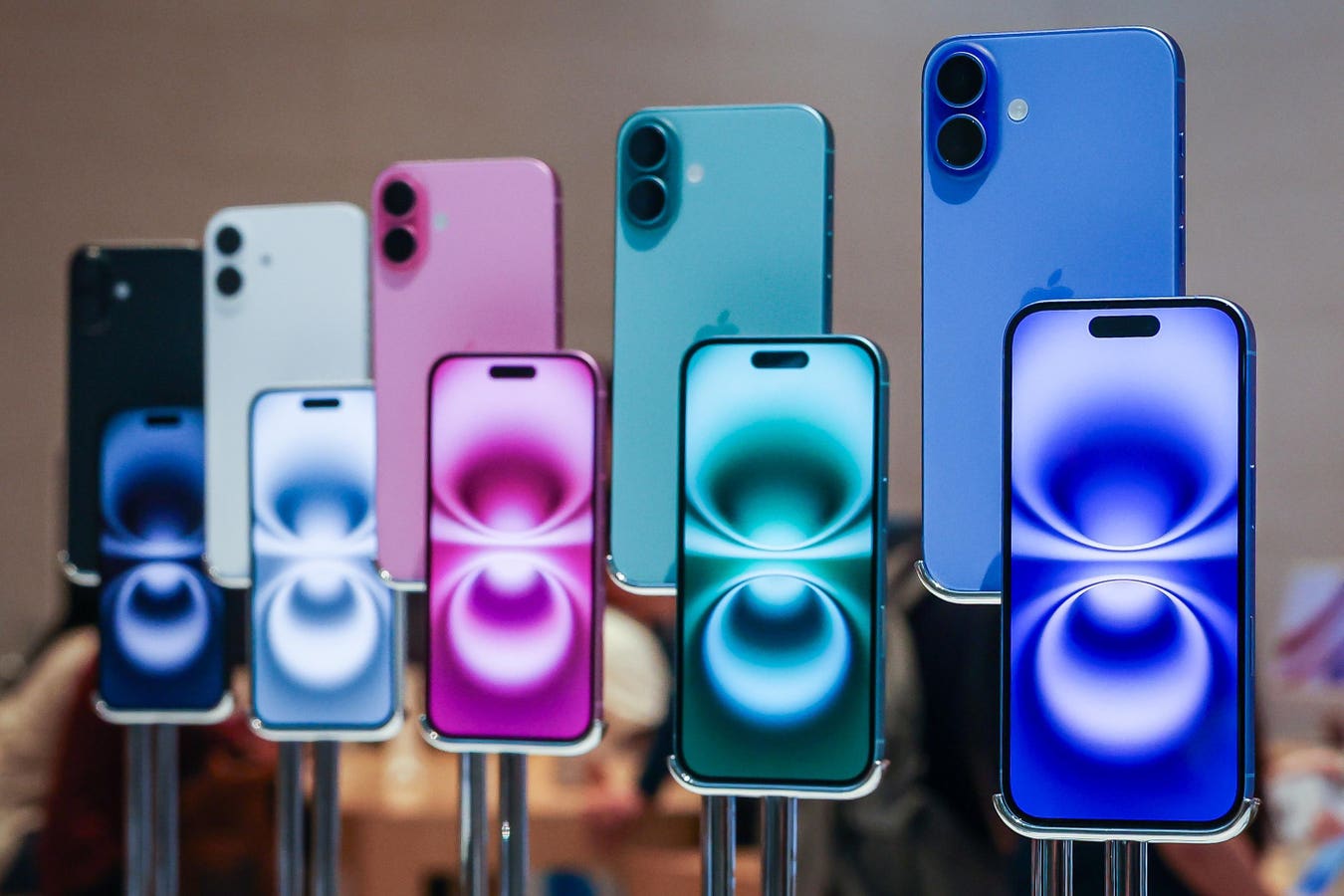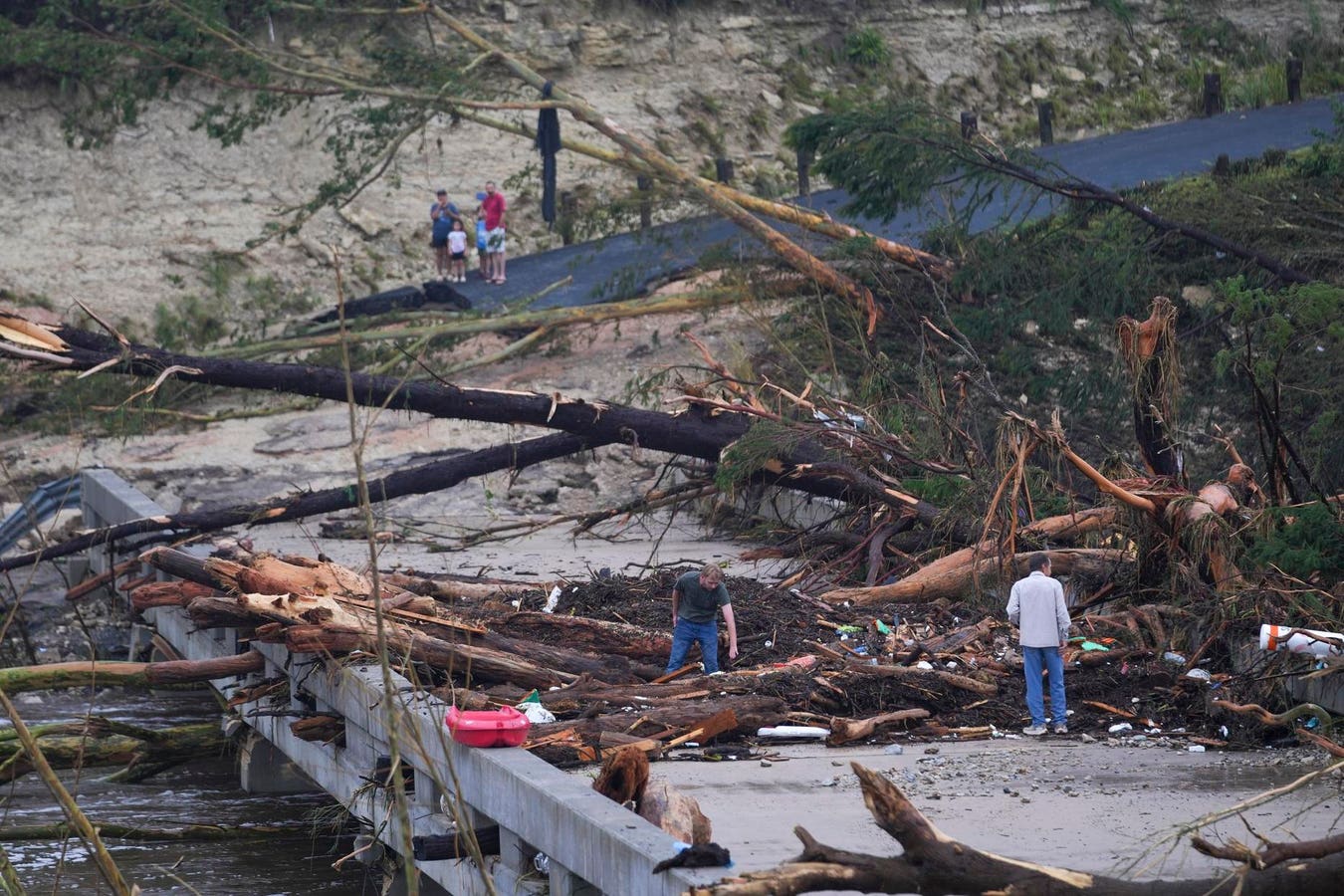MOIA robotaxi on the streets of Hamburg.
I’ve had a preview ride in Volkswagen’s driverless ID Buzz electric minivan, which, later this year, Uber will use for a robotaxi ridepooling project in Los Angeles. Christian Senger, CEO of MOIA, VW’s autonomous driving subsidiary, joined me for the journey which saw the robotaxi successfully making space for cyclists and pedestrians.
MOIA’s production autonomous vehicle (AV) was unveiled in Hamburg, Germany, on 18 June, and VW claims it will soon be the first AV to receive regulatory certification in the EU. The ID Buzz AD, upgraded with 27 sensors, has ample room for four passengers (the non-AV version carries seven). Senger was sitting up front next to safety driver Axel Hein in a seat that will become luggage space when Uber soon takes delivery of its fleet.
“Here we see a car blocking the lane,” says Senger as we pull to a stop behind a double-parked motorist. “Our vehicle now decides if this is part of a traffic queue and to stay put or if it’s a badly parked car that should be passed. There, it has already decided to overtake, and off we go again.”
VW safety driver Axel Hein at the wheel of a MOIA robotaxi in Hamburg.
Hein’s hands hovered over the steering wheel, but there had been no cause for him to take control: the black and bronze minivan pulled out by itself, its sensor suite deciding in short order that it was good to go. Thirteen cameras, nine LiDARs, and five radars pump five gigabytes of data per second to MOIA’s onboard autonomous driving (AD) software. At a crosswalk, the MOIA-logoed vehicle slowed and stopped for pedestrians and didn’t slam to a halt when a cyclist darted through on the inside. Instead, the minivan nudged over to make room. A human driver might have been surprised by the cyclist’s seemingly sudden manoeuver, but the minivan’s Mobileye sensor and software package anticipated the move, no robotic bird-flipping required.
“She is violating [German] traffic law,” Springer says of the darting cyclist. “It’s not allowed to ride with a bicycle over a zebra crossing—but we allow for the mistakes of others.”
A console displayed the status of nearby static and moving vehicles, with stick figures representing pedestrians and cyclists oscillating between red and green depending on their proximity to us.
What if a child ran out from the sidewalk between parked cars a meter or two distant, the test that a cameras-only Tesla operating Full Self-Driving (FSD) mode appeared to flunk recently?
“The child would be safe,” asserts Senger. “Our sensors see things earlier than a human. A minivan’s roof is high, and we also have sensors down very low so we can see underneath and above vehicles in front and to all sides. We have trained the system to understand what is and isn’t relevant in the environment. If a cat sprang out from beneath a car, we would stop for that in good time, too.”
Simulation of VW Moia robotaxis operating in Los Angeles.
Uber’s version of MOIA’s driverless minivan will have NFC keyless entry through a dedicated smartphone app, start-stop buttons for passenger emergency use, and plain plastic flooring for any taxi-style liquid spills or worse. And forget about leaving wallets, phones, or bags on the cream leather seats—cabin cameras linked to speakers will alert alighting passengers that their belongings ought not to be left behind.
The internal cameras also police behavior. AI spots any shenanigans—Senger jokes that fights would be prevented between passengers supporting rival soccer teams thanks to MOIA’s pre-crime algorithms.
Volkswagen’s autonomous mobility division has been working on robotaxis for ten years. The name is based on “Maya,” the Sanskrit word for magic, and was inspired by the Arthur C Clarke quote, “Any sufficiently advanced technology is indistinguishable from magic.” There’s no crossbar on the “A” at the end of the MOIA logo, and upside down, the “M” and the “A”—if you ignore the “I” and the “O”—spells VW.
After discontinuing its troubled Cariad auto software system and pulling funding from its previous partner, Argo AI, VW signed with Intel-owned Mobileye four years ago. This partnership led to the rollout of a skunkworks version of a driverless ID Buzz for a small trial in Austin, Texas, in 2023.
“Leadership in robotaxis is about achieving the highest levels of safety with a technology package that can scale in volume, geography, and cost,” said a statement from Mobileye CEO Amnon Shashua.
Christian Senger, CEO of MOIA, VW’s autonomous driving subsidiary.
MOIA’s Level 4 self-driving system—capable of speeds up to 130 kph—is enabled by four Mobileye EyeQ6H chips working with the company’s REM AV mapping technology, which allows vehicles to adapt to any roads. “We can even go on gravel roads,” says Senger.
“We are not using GPS,” he adds. “GPS can be disturbed, as has been shown in recent geopolitics; we are more robust without it. Nor are we dependent on Google Maps or similar—it’s our own map format.”
In addition to MOIA, Uber also has North American AV partnerships with Waymo and Hyundai-linked robotaxi company Motional, and in the UAE, with WeRide. In a statement from earlier this year, Uber CEO Dara Khosrowshahi said the Los Angeles trial with MOIA was a “significant milestone in the advancement of autonomous mobility and highlights both Volkswagen’s and Uber’s shared dedication to building the future of transportation.”
Unlike Uber’s new Route Share service, which travels on fixed, bus-style routes with set pick-up and drop-off times, the ride-hailing operation with driverless ID Buzzes in Los Angeles will be a go-anywhere shared taxi service. The MOIA/Uber app would allow a woman traveling alone late at night to book a solo journey rather than ridepool.
“If you are a 17-year-old woman on the way home from clubbing at 1 o’clock in the morning, there will be an option [in the app] to book an exclusive ride,” soothes Senger. “But at 7.30 in the morning, there’s less risk, so a woman could choose to ridepool, knowing that there are cabin cameras monitoring for safety. If needs be, a remote operator can talk to passengers to check everything is OK. It’s also easy to stop the ride in an emergency; if somebody is about to be sick, say.”
Senger won’t divulge how many miles MOIA’s driverless vehicles go without human intervention. “We measure with time, not distance,” he says before pointing at a cyclist ahead.
“He is cycling in the middle of the lane. We won’t get any closer. Anyway, we’re pulling in here because we’ve arrived at our first destination. We wouldn’t have followed the cyclist closely. We will not do any crazy maneuvers; unlike many human drivers, we follow all traffic laws. If 50 kilometers an hour is allowed, but the cyclist is only doing 15, then the vehicle will pass only if there’s enough distance not to bring any danger.”
Back moving, we paused at a stop light ahead of a crosswalk and a right turn, frustrating the human motorist behind. “We have green, but there’s not enough room for us before the queue of cars ahead; a human driver might encroach on the crosswalk, but we won’t.”
The queue soon moved; we pulled ahead; the frustrated motorist behind hadn’t been unduly delayed.
“We use the data of all this good behavior to convince authorities that we’re smart and always stick to traffic regulations,” says Senger. “We’re good citizens.”
MOIA’s sensor suite recognizes the sirens and flashing lights of first responder vehicles but, for now, disengages to let the safety driver squeeze over to let them pass.
“We could add what to do in that sort of situation with a software update,” promises Senger, adding that the scenario has been robotically role-played on a private test track in Munich.
“There,” says Senger as we arrive back at the expo halls, “we have driven through Hamburg fully autonomously.”
Hein had little to do on our uneventful 36-minute journey. We had driven smoothly, successfully, and safely to and from the UITP Summit, a transit expo staged in Hamburg’s exhibition halls and where MOIA had a booth. Many members of the transit industry believe they will have fully certified autonomous vehicles on the road, without safety drivers, before automakers.
Way to go
If recent incidents are anything to go by, there’s still much room for improvement in robotaxi tech. A San Francisco-based cyclist is suing Waymo after she was seriously injured when one of the company’s robotaxis stopped in a bike lane and a passenger opened a back door, hitting the cyclist and causing her to deflect into another Waymo car that was also illegally blocking the bike path.
According to the lawsuit, the Safe Exit system employed by Waymo, which aims to alert passengers of surrounding dangers and hazards, failed. The injured cyclist claims that Waymo knows its cars are “dooring” cyclists.
Earlier this month the cyclist sued Waymo and Google’s parent company Alphabet in San Francisco County Superior Court alleging battery, emotional distress, and negligence, while seeking unspecified damages. Wayme claims that its robotaxis recognize cyclists as “unique users of the road,” drive conservatively around them, and recognise common hand signals.
“As technology moves forward, we believe it is crucial for all autonomous car companies to not move forward too quickly,” said a statement from Michael Stephenson, the cyclist’s attorney.
“In the interest of public safety, they must make sure they are adequately testing and refining their technology before subjecting the public to these cars,” Stephenson added.
In February 2024, a cyclist was injured in San Francisco after a Waymo robotaxi failed to detect his presence and struck him.
“The cyclist was occluded by the truck and quickly followed behind it, crossing into the Waymo vehicle’s path,” said a company statement. “When they became fully visible, our vehicle applied heavy braking but was not able to avoid the collision.”
Elon Musk’s Tesla launched a rival robotaxi service this month in Austin, Texas, but the handful of vehicles are restricted to only certain areas of the city with geofencing, and the first journeys were with invited passengers only, including Tesla fans. The trial has not been without its problems, with many examples of poor autonomous decision made by the Tesla robotaxis highlighted by the well-funded Dawn Project.
This organization is bankrolled by one of Musk’s fiercest—and richest—critics who is doing his dollar-propelled darnedest to prick the belief bubble protecting Musk. Software billionaire Sam O’Dowd spends huge sums on TV ads and a PR campaign to highlight what he claims are the “flaws” in Tesla’s driverless FSD car tech. O’Dowd believes Musk’s claims for FSD are fraudulent, with one of his personally-fronted TV ads asking whether Musk was guilty of running a “trillion dollar Ponzi scheme.”
If this anti-FSD campaign—which pre-dates the anti-Musk Tesla Takedown movement—works even a little it could lead to Musk’s financial downfall, believes O’Dowd. Musk has previously admitted he’s vulnerable on this front. “[My] overwhelming focus is on solving full self-driving,” Musk said during a June 2022 interview with three Tesla fanboys. “It’s really the difference between Tesla being worth a lot of money or worth basically zero.”
O’Dowd, who made his fortune selling secure software for fighter jets and nuclear bombers, isn’t a Tesla hater. He owns five Roadsters and four other Tesla cars, three of which are used as test vehicles by his anti-FSD campaign hosted on the Dawn Project website.
“The Roadster’s fantastic,” he tells me from his Santa Barbara, California office. “It’s what I drive every day [and have done] for 15 years.”
Nor is O’Dowd down on driverless cars in general. “It’s not that [autonomous driving] is impossible. Waymo made it work. Amazon has them; BYD in China has them—true self-driving cars [exist]. Tesla’s [FSD] is nowhere close to [those technologies]. Elon Musk said recently [Tesla is] the leader in autonomy by far, [yet] the thing that its product is supposed to do—which is drive without anybody sitting in the driver’s seat—[FSD] can’t do.”

